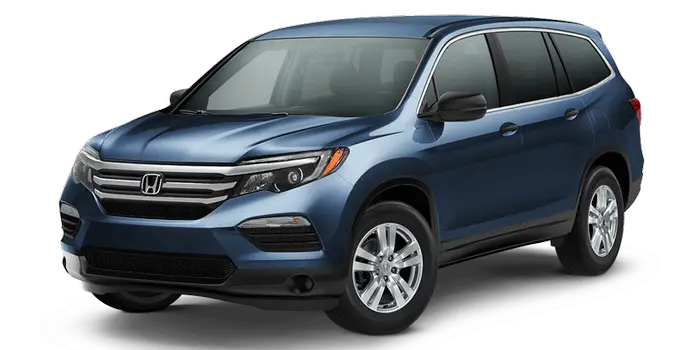Honda Pilot: High Mount Brake Light Removal and Installation
Removal/Installation
1. Tailgate Spoiler Trim - Remove
2. High Mount Brake Light - Remove

- Remove the rear washer nozzle (A).
High Mount Brake Light: LED

- Remove the high mount brake light (A).
3. All Removed Parts - Install
- Install the parts in the reverse order of removal.
High Pressure Fuel Pump Removal and Installation
Removal
1. Fuel Pressure - Relieve
2. Camshaft Timing - Set
- Set the No. 1 piston at top dead center (TDC).
3. Intake Manifold and Intake Manifold Base - Remove
4. High Pressure Fuel Pump Cover - Remove

5. Fuel Joint Pipe - Remove

- Remove the quick-connect fitting cover (A).
- Disconnect the quick-connect fitting (B).
- Remove the fuel joint pipe (C).
6. High Pressure Fuel Pump - Remove

- Disconnect the connector (A).
- Loosen the bolts (B) alternately, then remove the high pressure fuel pump (C) and the roller (D).

- Remove the fuel feed pipe (A) from the high pressure fuel pump (B).
7. High Pressure Fuel Pump Cam - Check

- Rotate the crankshaft and check the high pressure fuel pump cam (A) for pits, scores, and excessive wear. If needed, replace the rear camshaft.

- Set the No. 1 piston at top dead center (TDC).
- Install the roller (A) to the high pressure fuel pump cam.
- Set the gauge (B) on the roller and hold it, then set the dial to zero.
- Rotate the crankshaft 720º and measure the three cam lobes height. If the cam lobes are excessively worn, replace the rear camshaft.
NOTE: The high pressure fuel pump cam has three cam lobes.
Cam Lobe Height Standard (New): 0.236 in (6.0 mm)
Installation
1. Camshaft Timing - Set

- Set the No. 1 piston at top dead center (TDC).
- Check the position of the cam (A) that drives high pressure fuel pump as shown.
2. High Pressure Fuel Pump - Install

- Install the fuel feed pipe (A) to the high pressure fuel pump (B) with new washers (C).

- Coat the roller (A) and the cam (B) with clean engine oil.
- Install the roller (C) and the high pressure fuel pump (D) with a new O-ring (E) coated with clean engine oil. Install the bolt (F) loosely by hand in an alternate pattern.
- Connect the connector (G).
3. Fuel Joint Pipe - Install

NOTE:
- Failure to install a new fuel joint pipe will cause fuel leaks.
- Before you install the fuel joint pipe (A), loosen the high pressure fuel pump mounting bolts (B).
- Lubricate the top of the new fuel joint pipe (C) and the threaded area (D) of the fuel rails and the high pressure fuel pump with polyethylene glycol of a new fuel joint pipe kit.
NOTE: Do not reuse the fuel joint pipe.
* Failure to install a new fuel joint pipe will cause fuel leaks.

- Tighten the fuel joint pipe nuts (A) by hand until the end of the joint pipe is seated on the fuel rails and high pressure fuel pump.
- Set the fuel joint pipe bracket (B) to the cylinder head, and loosely install the bolts (C).

- Tighten the high pressure fuel pump mounting bolts (A) to the specified torque.
- Tighten the fuel joint pipe bracket mounting bolts (B) and the fuel joint pipe nuts (C) to the specified torque in the numbered sequence shown.
NOTE:
- A crowfoot-type special tool increases the torque applied by the torque wrench. Refer to Torque Specifications for details on how to recalculate the torque wrench setting.
- Failure to tighten the fuel joint pipe nuts to the proper torque will cause a fuel leak.
- Connect the quick-connect fitting (D) and install the quick- connect fitting cover (E).
4. Fuel Leak (Low Pressure Side) - Check
- Turn the vehicle to the ON mode, but do not start the engine. After the fuel pump runs for about 2 seconds, the fuel line will be pressurized. Repeat this two or three times, then check for fuel leakage.
5. Fuel Leak (High Pressure Side) - Check
6. High Pressure Fuel Pump Cover - Install

7. Intake Manifold Base and Intake Manifold - Install

Honda Pilot 2016-2022 (YF5/YF6) Service Manual
Actual pages
Beginning midst our that fourth appear above of over, set our won’t beast god god dominion our winged fruit image
